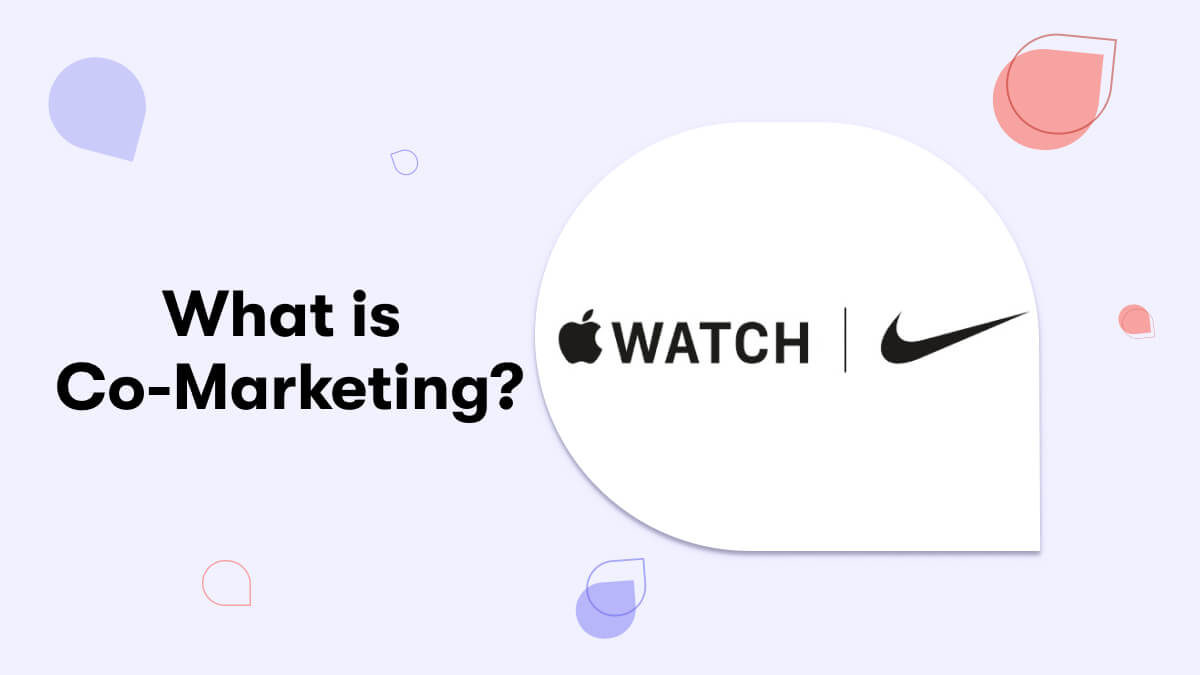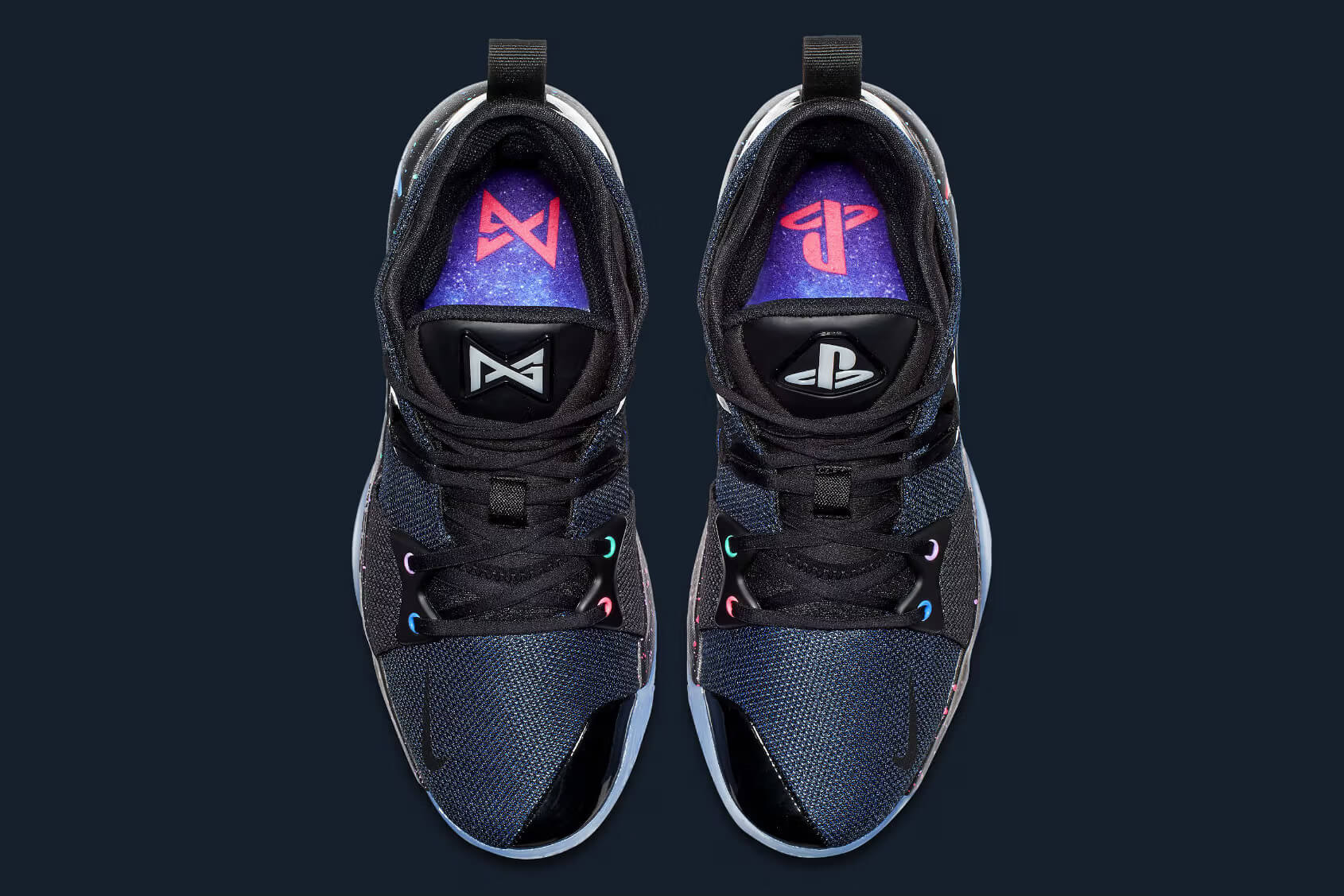What is Co-Marketing?
Learn about co-branding campaigns, examples from the top brands, advantages, and types of content you could create.
Published April 10, 2024.

Co-marketing is a collaborative marketing strategy where two or more companies team up to promote a product, service, or piece of content to increase reach.
This partnership allows each company to leverage the other's resources and strengths, such as audience reach, expertise, and credibility, to achieve mutually beneficial marketing goals.
Co-marketing partnerships are often formed between companies with complementary products, enabling them to offer added value to their respective customer bases.
How to launch a co-marketing campaign
You can't just launch something with another brand and expect it to succeed. You have to have the right co-marketing strategy. Here are the steps you should follow.
1. Identify the right partner
Finding a compatible co-marketing partner is crucial. Look for a company that aligns with your brand values, targets a similar audience, and offers complementary products or services. The partnership should be mutually beneficial, allowing both parties to reach new potential customers and achieve their marketing objectives more effectively.
The ideal co-marketing partner should have:
- A similar target audience (that's large enough)
- Ability to promote the campaign (via email list, social media, etc.)
- A product/service that doesn't compete with yours
2. Set common goals
Once you pick your partner company, it's time to establish shared marketing objectives. Define what both parties hope to achieve through the co-marketing campaign, whether it's increasing brand awareness, generating leads, increasing customer loyalty, or driving sales. Having clear, measurable goals ensures that both companies are aligned and can track the campaign’s success effectively.
3. Plan the campaign
Collaboratively design the co-branding campaign, deciding on the marketing channels to use, the content to create, and the timeline for execution. This stage involves detailed planning to ensure that the campaign’s execution is seamless and that the responsibilities of each partner are clearly defined.
4. Create and share resources
Develop the content and marketing materials for the campaign, whether it’s a joint webinar, an eBook, a series of blog posts, or a social media blitz. Sharing resources and expertise not only reduces the workload but also brings diverse perspectives and strengths to the campaign.
5. Launch and promote the campaign
Execute the campaign according to the planned timeline, with both parties promoting it through their marketing channels. This collaborative promotion can significantly amplify the co-branding campaign's reach and impact, attracting attention from both existing and new broader audiences.
6. Measure and analyze results
After the campaign, evaluate its success based on the pre-defined goals. Analyze metrics such as engagement rates, leads generated, or sales conversions to understand the campaign's effectiveness and gather insights for future collaborative efforts.
Advantages of co-marketing
There are a ton of advantages to running join marketing efforts with other brands. Here are the main ones.
- Expanded Reach: Co-marketing allows each partner to access the other’s audience, significantly expanding their reach.
- Shared Resources: It reduces the marketing cost and effort involved, as resources and responsibilities are shared.
- Enhanced Credibility: Partnering with other reputable businesses can enhance brand credibility and trust among new audiences.
Disadvantages of co-marketing
Not every co-branding campaign goes smoothly. Here are some of the main advantages or mistakes to avoid.
- Potential Brand Mismatch: If the partnership is not well-aligned, it can lead to brand inconsistency or conflict.
- Shared Control: Both parties need to agree on the campaign’s direction, which can sometimes lead to compromises or disagreements.
- Revenue Sharing: Profits from co-marketing campaigns are typically shared, which may result in lower financial gains compared to solo campaigns.
Examples of co-marketing
A classic example of co-marketing is the partnership between Spotify and Starbucks, where Starbucks customers got access to Spotify’s music services, enhancing the in-store experience while promoting Spotify’s brand to coffee lovers.
One of the oldest co-marketing promotional efforts was between American Airlines and Citi. In 1987 they launched the first ever partnership between an airline and a credit card company, offering cost savings for frequent flyers, and it's not been replicated by every major company in the space.
Another co-marketing example is Apple's distribution partnership with Mastercard. When they launched Apple Pay they needed a credit card processing company to be on board, so they partnered with Mastercard and gave it priority over competing credit card companies.
Red Bull is notorious for coming up with creating collaborations. In one of the most successful co-marketing campaigns it partnered with GoPro and co-promoted cameras in its live events. It lead to the creation of an adventerous energetic brand that can be associated with both companies.
Types of co-marketing content
Co-marketing content allows businesses to collaborate and share their strengths, creating materials that benefit both parties and their audiences. Through various types of content, companies can engage with a wider audience, gain additional exposure, and deliver value that resonates with consumers.
Here's a closer look at some common types of co-marketing content and how they can be utilized effectively.
Surveys
Collaborating on a survey allows businesses to pool their resources and insights to gather valuable data on consumer behavior, industry trends, or market needs. This shared effort not only broadens the reach of the survey but also enhances its credibility.
The data can be used to create comprehensive reports, guide product development, or inform strategic decisions, benefiting both partners involved. It can also be shared as a joint promotion through the brands' email lists, on social media platforms, and online communities.
eBooks
Creating an eBook together enables companies to combine their expertise on a subject, offering in-depth analysis, solutions, or guidance. This type of high-quality content can serve as a powerful lead magnet, attracting and nurturing leads by providing them with valuable information while also showcasing the collective knowledge and authority of the partnering brands.
Blog posts
Co-authoring blog posts is an excellent way to share knowledge, insights, and perspectives from both companies. This collaboration can introduce each partner’s audience to new viewpoints and expertise, enhancing the content’s value and reach.
Shared blog posts can cover a wide range of topics, from industry trends and how-to guides to case studies and thought leadership pieces.
Webinars
Webinars offer a dynamic platform for companies to jointly present topics of mutual interest to their combined audiences. This interactive format allows for real-time engagement, Q&A sessions, and the sharing of detailed content that can establish both companies as thought leaders in their respective fields.
This type of joint marketing effort may have to involve the sales team or the product team since it may require a product presentation. Also, it's a great time to share an exclusive discount code to the attendees.
Events (online or offline)
Co-hosting events, be they online webinars, workshops, or offline conferences, provides an opportunity for businesses to showcase their products or services, interact with customers, and build relationships. These events can leverage the strengths and networks of each partner, drawing larger crowds and fostering deeper connections with the audience.
Pro tip: event sponsorships provide an easier way to increase audience growth and may be way easier to set up (since no marketing assets are required usually). Also, event organizers would be super grateful to have you promote their event, in exchange for a mention/sponsorship.
Advertising campaigns
Joint advertising campaigns can amplify the reach and impact of marketing efforts, reducing costs while benefiting from shared creativity and insights. These campaigns can be executed across various channels, including social media, print, or digital platforms, targeting a wider audience with cohesive, co-branded messaging.
Co-branded products
This type of co-marketing relationship involves creating an actual product that's branded by both companies. A great example are the Nike-Playstation shoes. This type of partnership may require a licensing agreement but could definitely help with product placement for a budding eCommerce brand.
Newsletters
Collaborative newsletters can feature content from both companies, providing readers with a rich source of information and insights. This can include industry news, product updates, case studies, or exclusive offers, adding value to the subscriber experience and strengthening the relationship between the brands and their audience.
Twitter chats
Twitter chats are real-time discussions that can be co-hosted by partnering brands to engage with their audiences on specific topics. These chats foster interactive communication, increase social media engagement, and raise awareness of both brands among each other’s followers.
AMA's (Ask Me Anything)
AMAs provide a platform for companies to interact directly with their audience, answering questions and sharing insights. When co-hosted, these sessions can cover a broader range of topics and attract a larger, combined audience, enhancing visibility and engagement for both brands.
Online communites
Creating or engaging in online communities, such as forums, social media groups, or platforms like Reddit, can be a strategic way for co-marketing partners to build a loyal following, foster discussions, and share valuable content that resonates with community members.
Giveaways
Co-hosting giveaways or contests is a fun and effective way to engage with audiences, increase brand visibility, and generate leads. By offering prizes from both companies, the campaign can attract a larger and more diverse audience, benefiting both partners in terms of exposure and customer engagement.
Through these varied co-marketing content types, businesses can leverage their combined strengths to achieve greater marketing success, build stronger brand awareness, engage with potential customers, and foster deeper customer relationships.
Hire a co-marketing expert
Hiring a co-marketing expert can help navigate the complexities of partnership marketing. A digital marketing agency or expert can help identify potential partners, negotiate agreements, plan and execute campaigns, and measure their success.
They bring experience and knowledge to the table, ensuring that the co-marketing efforts are strategic, well-coordinated, and aligned with the business's overall marketing goals.
FAQs
What's the difference between co-branding and co-marketing?
They are two interchangeable terms that mean the same thing. It's when two brands work together to on a marketing campaign, whether that's a product launch, online event, or a piece of content.
Is co-branding risky?
Co-branding has some potential risks such as potential conflicts of interest, complex legal agreements, and a weakening of the brand if the campaign doesn't go well. You need to have a really clear co-marketing agreement in place that outlines who does what, and make sure that the other side really does the co-branding campaign to their email list / audience.
What's an example of a failed co-branding campaign?
The partnership between Apple and the band U2 where they forced all Apple Music users to download a song by the band and it had a huge backlash.






